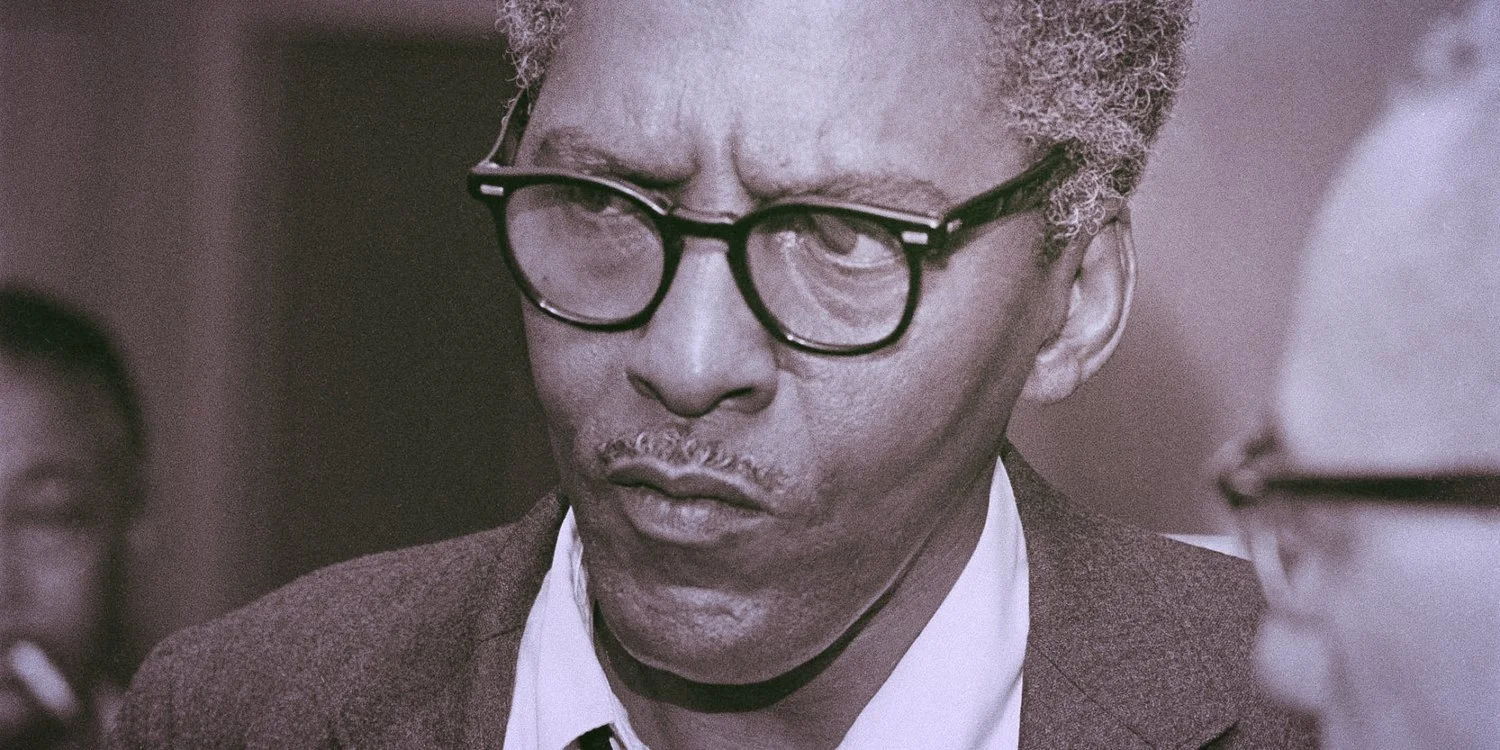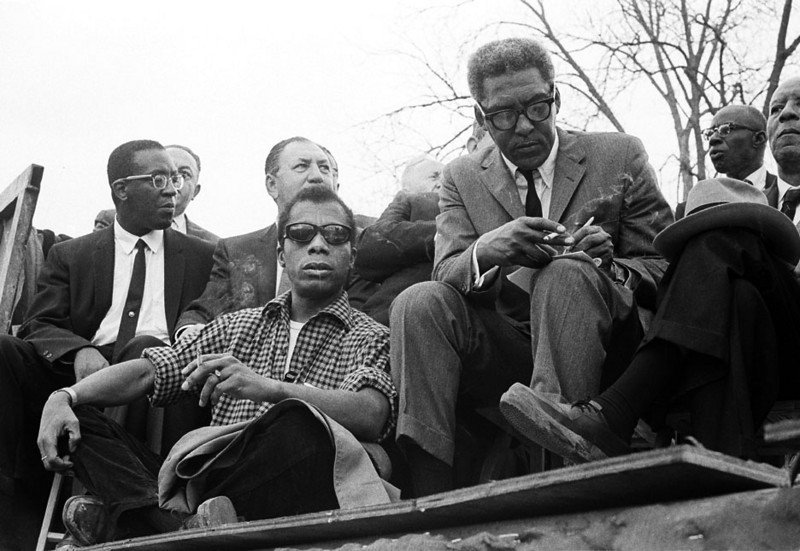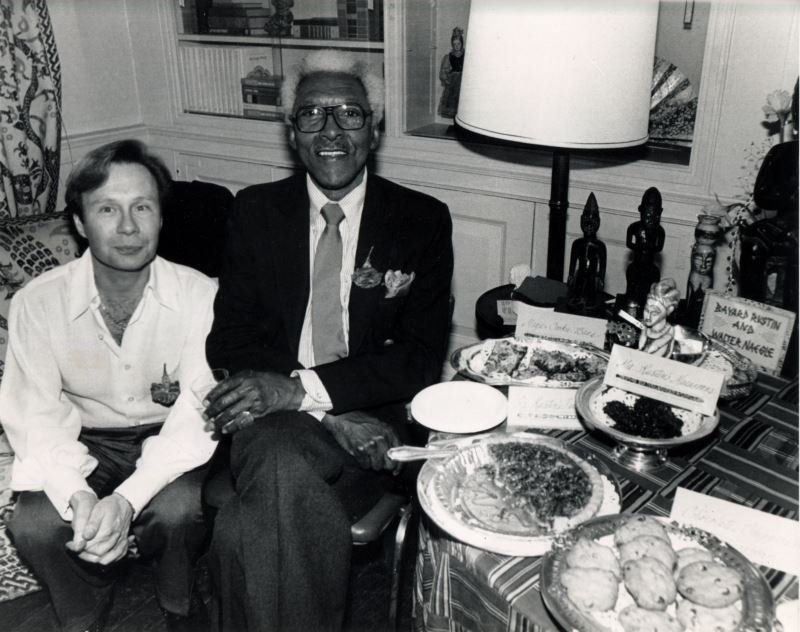Bayard Rustin: A Unique, Clandestine, and Enduring Queer Leader of the Civil Rights Movement
It feels disingenuous to write less than a novel about Bayard Rustin and call it his life’s story.
He was the chief architect of the 1963 March on Washington, integrated all-white labor unions, and helped streamline the logistics for activating non-violence into a formidable protest strategy in the mid-20th Century.
A sharp, intense, and glaringly brilliant man, Rustin had to balance his immense talent for organization and advocacy with the threat that if he were too visible, his homosexuality, pacifist draft-dodging during WWII, and youthful proximity to the Communist Party would be used by detractors to smear or discredit the Civil Rights Movement. Some of his contemporaries felt that respectability politics made him a liability to the causes he supported, so he worked in the background with little mainstream recognition, sidelined from textbooks and grade school discussions about heroes of the time.
Early Civil Rights Career and Arrests
Raised a Quaker by his NAACP Affiliated grandmother, Rustin was exposed to both a conviction for non-violence and a slew of revolutionary activists and thinkers at a young age, via house visits from figures such as Mary McLeod Bethune and W. E. B. Du Bois himself. He joined the Young Communists League while at university in the 1930s, then revoked his allegiance to it in 1941 when they dropped racial equality from their roster of priorities.
He worked as an organizer for the Congress of Racial Equality (CORE) and the Fellowship of Reconciliation (FOR) in the early 1940s, then spent two years in prison as a conscientious objector refusing to fight in the second World War. He was imprisoned again on a grueling North Carolina chain gang with other members of CORE in 1947 after testing out a Supreme Court ruling which claimed to ban segregation laws on interstate travel. He would serve a third sixty day jail term in 1953 on ‘lewd vagrancy’ and moral indecency charges after being found having sex with two men in a parked car on a warm Pasadena night.
Organizing the March on Washington
JAMES BALDWIN AND BAYARD RUSTIN
After their correspondence during the Montgomery Bus Boycotts, Martin Luther King Jr. took on Rustin as a deeply intimate collaborator, friend, and invaluable advisor.
Despite virulent pushback from a minority of other leaders gathered in Harlem’s Roosevelt Hotel to discuss the inception of the March on Washington, Rustin was selected as the man to spearhead the organizational effort—so long as he stayed out of the limelight. He had decades of experience in organization, an undeniable mastery of mobilizing activists, and had traveled abroad to work with West African independence movements in the 1950s. Pulling dizzying hours in a rented out former Harlem church on the corner of West 130th and Lenox Avenue, Rustin was charged to pull together countless threads of logistics, communication, and organizational manpower in the span of two months.
Relationship to Queer Liberation
BAYARD RUSTIN WITH HIS PARTNER, WALTER NAEGLE
A fantastically busy man constantly sidelined for potentially endangering the causes he championed the on basis of his sexuality, it’s not surprising that Bayard Rustin didn’t become a vocal gay rights activist until the 1980s.
While he was never ashamed of his orientation, according to his partner upon his death, Rustin did decline an invitation to be included in a book about the struggles of out black gay activists, because he felt that he didn’t contribute enough to gay rights while he was in the prime of his career in activism, and that he didn’t publicly ‘come out’ so much as was outed involuntarily in the semi-public eye.
In 1986, he testified on the behalf of a New York City queer civil liberties law, stating that at that point in his life and experience in human liberties, gay rights had become the new barometer for social change and progress.
---
Mel Paisley is transmasculine author, illustrator, and general loudmouthed inkslinger based out of Savannah, GA. He writes a lot about pre-Stonewall herstory, schizophrenia, and being mixed and queer in the Deep South. (IG/Twitter: @melpaisleyart, melpaisleyart.com)
Archive
- September 2025
- August 2025
- May 2025
- February 2025
- November 2024
- October 2024
- September 2024
- August 2024
- July 2024
- June 2024
- May 2024
- April 2024
- October 2023
- July 2023
- June 2023
- May 2023
- April 2023
- March 2023
- February 2023
- June 2022
- April 2022
- March 2022
- January 2022
- December 2021
- October 2021
- September 2021
- August 2021
- July 2021
- June 2021
- May 2021
- April 2021
- March 2021
- February 2021
- January 2021
- December 2020
- October 2020
- September 2020
- August 2020
- July 2020
- June 2020
- May 2020
- April 2020
- March 2020
- February 2020
- January 2020
- December 2019
- November 2019
- October 2019
- September 2019
- August 2019
- July 2019
- June 2019
- May 2019
- April 2019
- March 2019
- February 2019
- January 2019
- December 2018
- November 2018
- October 2018
- September 2018
- August 2018
- July 2018
- June 2018
- May 2018
- April 2018
- March 2018
- February 2018
- January 2018
- December 2017
- November 2017
- October 2017
- September 2017
- August 2017
- July 2017
- June 2017
- May 2017
- April 2017
- March 2017
- February 2017
- January 2017
- December 2015
- November 2015
- October 2015
- September 2015
- August 2015
- July 2015
- June 2015
- May 2015
- April 2015











